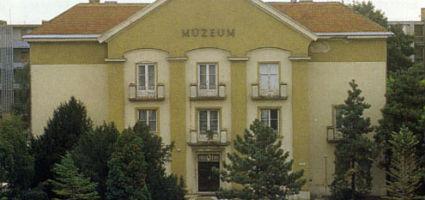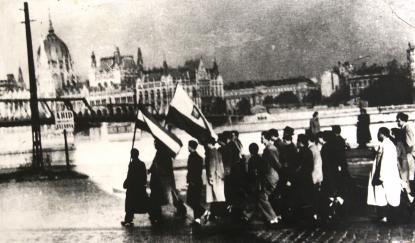 |
Address: 2400, Dunaújváros Városháza tér 4.
Phone number: (25) 411-315
E-mail: intercisamuz@gmail.com
Opening hours: Tue-Sat 10-16
On the first Sunday in each month is open: 14-18 |
|
Ticket for adults
|
700 HUF
|
|
|
Group ticket for adults
(from over 10 people)
|
700 HUF
|
|
|
Ticket for students
|
350 HUF
|
|
|
Group ticket for students
|
350 HUF
|
|
|
Ticket for pensioners
|
350 HUF
|
|
|
Group ticket for pensioners
|
350 HUF
|
|
|
Ticket for families
|
1400 HUF
|
/ family
|
When the Soviet Union in 1940 extended the borders of its sphere of influence involving Poland, Hungary and Czechoslovakia, they turned three states their ally that were economically, socially and politically far more advanced than the Soviet Union was. It is therefore not surprising that the most durable and most active forms of fight against the oppressive regime took place in these countries, especially in the first two. Traditional Polish-Hungarian friendship served as a favourable basis for the mutual interaction between thoughts and actions, despite the distance and the obstacles between the borders.
 In Poznan, workers tricked by the country's leaders began demonstrations with the 'give us bread and freedom', then these turned into armed uprising beginning on 28 July 1956. According to official data, about 75 people were killed and 8OOwounded during the fights .
In Poznan, workers tricked by the country's leaders began demonstrations with the 'give us bread and freedom', then these turned into armed uprising beginning on 28 July 1956. According to official data, about 75 people were killed and 8OOwounded during the fights .
In Budapest on 23 October 1956. a huge demonstration was held the participants of which expressed their support for changes in Poland. They demanded changes in Hungary similar to those that took have a place in Poland. The government led by Imre Nagy began radical changes. However, secretly, on 3 November János Kádár changed sides and invited Soviet troops to Hungary. On 4 November Soviet troops invaded Budapest and despite the heroic resistance by 11 November 11-they occupied the capital and the same fate awaited the whole country at the end of the same month. Over three thousand people were killed in the fights with more than two hundred thousand people fleeing to the West. The former ambassador to Warsaw, Ákos Engelmayer, kept collecting photos about the events in 1956. They photos took an adventurous path before they were ready for an exhibition. In the eighties they served as important documents for illegal underground press in Poland and also served as demonstration material at illegal meeting held in private homes or churches.
It was shown in 1986 entitled "Budapest 56" without the permission of the authorities in the cellar of the parish Saint Cristopher in Podkowa Lesna.
In 1981, the material was shown in Poznan, which was then confiscated and destroyed by the Security Service. With the help of the hidden negatives, we managed to reconstruct the material.
First time in Hungary, on 12 October the material was exhibited at the Technical University of Budapest, after which it was shown in Petersburg, Moscow, Minsk, triggering huge interest and emotion. It is a great experience to see the documents about the adventurous history shared by the Hungarian and Polish nation.
Dr. Konrad Sutarski
